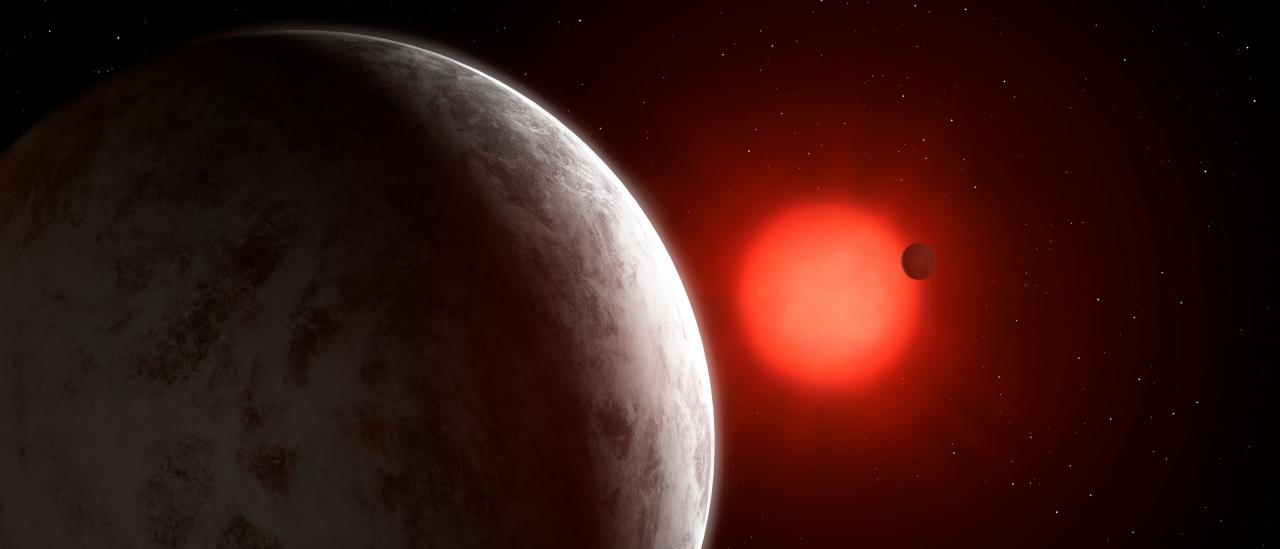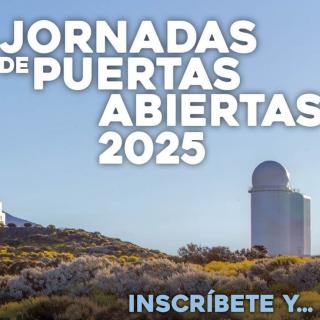The exoplanets closest to us offer the best opportunities to make a detailed study of their physical properties, including the search for life outside the Solar System. In research led by the University of Göttingen (Germany), in which the Instituto de Astrofísica de Canarias and the University of La Laguna (ULL) are participants, has detected a system of superearths in orbit round the nearby star Gliese 887 (GJ 887), the brightest red dwarf in the sky. The results are published today in the journal Science.
Superearths are planets with a larger mass than the Earth, but substancially less than that of our gas giants, Uranus and Neptune. The superearths recently discovered around Gliese 887 are close to the habitable zone of the red dwarf, where water can exist in liquid form, and they could be rocky planets.
“These planets give us the best chance for more detailed studies, including the search for life outside our Solar System”, explains Sandra Jeffers, a researcher at the Astrophysics Institute of the University of Göttingen (Germany) and first author on the paper.
The RedDots team of astronomers monitored the red dwarf using the HARPS spectrograph of the European Southern Observatory, in Chile. They used the technique of Doppler spectroscopy, which allows them to measure the tiny oscilatory movements of the star caused by the gravitational attraction of the planets. The regular signals correspond to orbits of only 9.3 and 21.8 days, which shows that they are two superearths, Gliese 887b and Gliese 887c, both of them more massive than the Earth, but which orbit around their star is much more quickly even that Mercury around the Sun. The scientists estimate that the average temperature on Gliese 887c is around 70ºC.
“Gliese 887 is one of the nearest stars to the Sun, only 11 light years away. It is much fainter, and has only around half the size of the Sun, which means that the habitable zone is closer to Gliese 887 than the distance between Earth and Sun”, explains Enric Pallé, a researcher at the IAC, and a coauthor of the study. RedDots discovered two interesting facts about Gliese 887.
The first is that this red dwarf has very few starspots. If Gliese 887 were as active as our Sun, it is probable that a strong stellar wind -carrying material which could erode the atmosphere of a planet- would simply sweep away the atmospheres of the planets. The low level of activity means that the recently discovered planets could have reatined their original atmospheres, or have denser atmospheres than the Earth, and could, potentially, host life, even though GJ 887 receives more light than the Earth.
“The other interesting characteristic which the team discovered is that the brightness of Gliese 887 is almost constant. This means that it is relatively easy to detect the atmospheres of the planets of this system of superearths, making it a key objective for the James Webb space telescope, the successor to the Hubble telescope” insists Rafael Luque, a doctoral student at the IAC and the ULL, who is another author of the article.
In 2016, the RedDots astronomical team found the nearest exoplanet to the Sun, which has about the same mass as the Earth, and orbits round Proxima Centauri. This was followed in 2018 by the announcement of the discovery of a superearth round Barnard's star, the second nearest star to the Sun. The team also announced, in 2019, a system of three planets which orbit the red star GJ 1061, a little further away than GJ 887.
Article: Jeffers et al. (2020), “A multiple planet system of super-Earths orbiting the brightest red dwarf star GJ887”. Science. DOI: 10.1126/science.aaz0795
Contact at the IAC:
- Enric Pallé: epalle [at] iac.es (epalle[at]iac[dot]es)
- Rafael Luque: rluque [at] iac.es (rluque[at]iac[dot]es)




